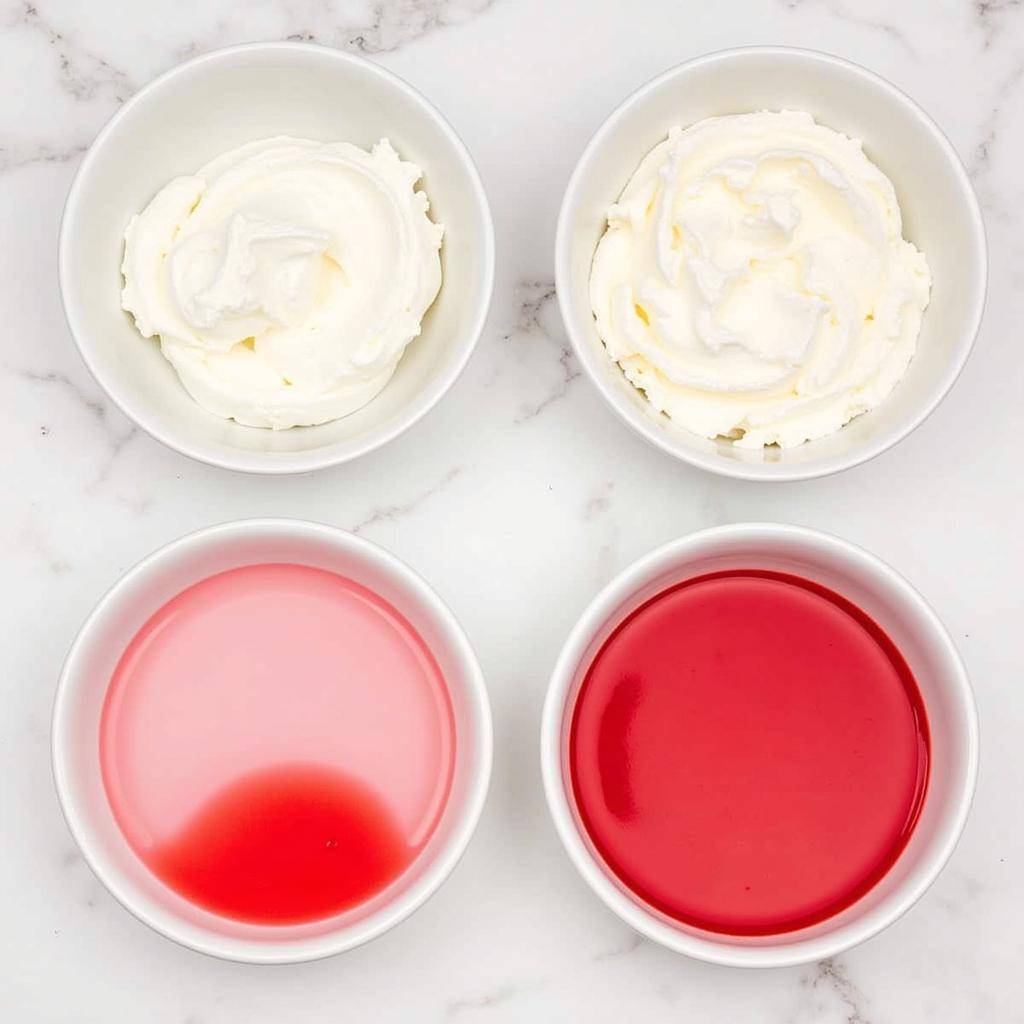Achieving a deep, rich red hue in your culinary creations can be tricky. Sometimes, store-bought red food coloring just doesn’t cut it. This comprehensive guide will explore how to make dark red food coloring, enabling you to achieve that perfect shade for your cakes, frostings, and other vibrant treats.
Getting that perfect dark red food coloring can often feel like a quest. Whether you’re aiming for a deep crimson for a velvet cake or a vibrant scarlet for holiday cookies, understanding how to manipulate and deepen red food coloring is a valuable skill for any baker or home cook. Let’s dive into the secrets of achieving this rich shade. After reading this article and applying the techniques described, how to make dark red icing with food coloring will be a piece of cake for you, quite literally.
Understanding Red Food Coloring
Before we delve into the methods of darkening red food coloring, it’s important to understand the basics. Most commercial red food colorings are water-based and come in varying concentrations. This is why sometimes you need only a drop, while other times you need a whole teaspoon to achieve the desired color.
Methods to Make Dark Red Food Coloring
There are a few effective ways to darken your red food coloring:
-
Layering: This technique involves gradually adding red food coloring to your mixture, allowing the color to build with each addition. Start with a small amount, mix well, and assess the color. Continue adding small increments until you reach the desired depth. This method provides control and prevents over-coloring.
-
Concentrating: If you’re working with liquid food coloring, you can try reducing its water content. Gently simmer the coloring in a saucepan over low heat until some of the water evaporates, resulting in a more concentrated and darker shade. Be careful not to burn the coloring.
-
Combining Colors: Believe it or not, sometimes adding a touch of another color can deepen red. A tiny drop of black or brown food coloring can create a richer, more complex red. Experiment with minute amounts to find the perfect balance. For example, if you’re wondering how to make red food coloring darker, this might be a good method to try.
-
Using Natural Colorings: For those seeking a natural approach, consider using concentrated beet juice or pomegranate juice. While these may not achieve the same vibrancy as artificial colors, they offer a healthier alternative and can still produce a beautiful dark red.
Tips for Success
-
Test on a Small Batch: Before adding color to your entire recipe, always test on a small portion. This allows you to fine-tune the color and avoid ruining a large batch.
-
Consider the Base Color: The color of your base ingredients will influence the final red shade. A white base will provide the truest color, while a yellowish base might require more red to achieve the same depth. Learning about color theory can also help with other projects, such as understanding how make yellow color or even how make purple color.
-
Use Gel or Paste Food Coloring: Gel or paste food colorings are more concentrated than liquid varieties, making them ideal for achieving deep, rich colors. They also have less impact on the consistency of your recipe. These are particularly useful when making how to make gold colored frosting.
 Layering Red Food Coloring for a Deeper Shade
Layering Red Food Coloring for a Deeper Shade
Troubleshooting Common Issues
-
Color Too Light: If your red isn’t dark enough, continue adding color gradually, or try concentrating your liquid coloring.
-
Color Too Dark: If you’ve added too much color, try adding more of the base ingredients to lighten the shade.
Conclusion
Making dark red food coloring is achievable with a few simple techniques. By understanding the properties of food coloring and employing the methods outlined above, you can achieve that perfect, vibrant red for all your culinary creations. Remember to test, experiment, and have fun with the process! Now that you have the knowledge, achieving that desired dark red should be a breeze!
FAQs
-
What is the best type of food coloring for dark red? Gel or paste food colorings are generally recommended for achieving dark, rich colors.
-
Can I use natural food coloring for dark red? Yes, concentrated beet juice or pomegranate juice can be used as natural alternatives.
-
How do I avoid over-coloring my mixture? Always start with a small amount of coloring and add more gradually until you reach the desired shade.
-
What can I do if my color is too light? Add more coloring gradually or try concentrating your liquid coloring by simmering it over low heat.
-
What if my color is too dark? Add more of your base ingredients to lighten the shade.
-
Does the base color affect the final red shade? Yes, the color of your base ingredients will influence the final red shade. A white base will provide the truest color.
-
Where can I buy high-quality food coloring? Specialty baking stores or online retailers often carry a wide range of high-quality food colorings.
Need more help? Explore our articles on other color-related topics.
For any assistance or inquiries, please contact us:
Phone: 0373298888
Email: [email protected]
Address: 86 Cau Giay, Hanoi.
Our customer service team is available 24/7.
